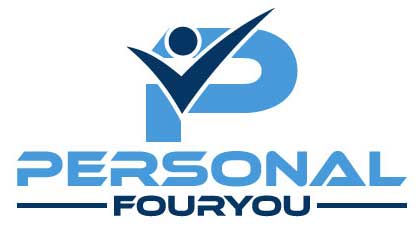
Railroad Settlement Acute Myeloid Leukemia
Eine Bewertung hinzufügen FolgeÜbersicht
-
Gründungsdatum August 23, 2002
-
Sektoren Entwicklungsingenieur:in Jobs
-
Gepostete Jobs 0
-
Gesehen 16
Beschreibung des Unternehmens
What’s The Job Market For Railroad Settlement Lymphoma Professionals?
Railroad Settlement Lymphoma: Understanding the Connection Between Occupational Exposure and Health Risks
Introduction
Occupational direct exposure to particular dangerous substances has long been acknowledged as a threat element for numerous health conditions, including various kinds of cancer. Among these conditions, lymphoma, particularly non-Hodgkin lymphoma, has actually emerged as a considerable concern for those who operate in the railroad industry. This post checks out the relationship in between railroad workers and the advancement of lymphoma, the offered settlement choices, and answers regularly asked questions surrounding this problem.
Understanding Lymphoma
Lymphoma is a kind of cancer that comes from in the lymphatic system, which is part of the body’s immune system. The two main types of lymphoma are Hodgkin lymphoma and non-Hodgkin lymphoma. The latter is more common and can occur in various types, depending upon the type of immune cells affected.
Types of Non-Hodgkin Lymphoma
Non-Hodgkin lymphoma is classified into numerous types based on the specific characteristics of the cancer cells. A few of the most common types include:
| Type of Non-Hodgkin Lymphoma | Description |
|---|---|
| Diffuse Large B-cell Lymphoma | A fast-growing form of cancer. |
| Follicular Lymphoma | A slow-growing cancer typically present for several years. |
| Mantle Cell Lymphoma | Generally impacts older adults and has a bad diagnosis. |
| Burkitt Lymphoma | A very aggressive kind often related to infections. |
The Railroad Industry and Cancer Risk
The railroad industry provides special occupational risks due to the numerous chemicals and materials employees may be exposed to with time. Proof suggests that specific exposures can increase the threat of developing lymphoma.
Common Occupational Exposures for Railroad Workers
-
Benzene: Found in diesel exhaust and fuel, benzene is a recognized carcinogen linked to blood cancers, including lymphoma.
-
Asbestos: Used thoroughly in older railcars and facilities, asbestos direct exposure is connected with various breathing diseases and cancers.
-
Pesticides and Herbicides: Used for weed management along train lines, they may also increase lymphoma risk.
-
Radiation: Workers who handle or preserve devices might be exposed to low levels of ionizing radiation.
Understanding these dangers is vital in resolving the health effect on railroad employees and their families.
Railroad Settlement Lymphoma Claims
Offered the recognized connection between occupational dangers in the Railroad Settlement Lymphoma industry and the medical diagnosis of lymphoma, many employees or their families may look for settlement. Understanding the settlement process can assist impacted individuals browse their options.
Key Steps Involved in Seeking a Settlement
-
Documentation of Exposure: Collect records of employment, medical diagnosis, and any associated exposure proof. This might include office security reports, medical records, and testament from fellow employees.
-
Consultation with an Attorney: Legal representation is critical for navigating intricacies in claims connected to occupational illness. An attorney must have experience with railroad settlement cases.
-
Gathering Medical Evidence: A thorough evaluation by physician about the link between the direct exposure and the disease will considerably boost the case.
-
Filing a Claim: Once all proof is collected, a claim can be submitted under the Federal Employers Liability Act (FELA) or appropriate state laws, depending on the specifics of the case.
-
Negotiating a Settlement: Many cases are settled before reaching trial, with settlements typically reliant on medical expenditures, lost salaries, and pain and suffering.
Possible Compensation
Victims of lymphoma connected to railroad work may be qualified for various kinds of payment, consisting of:
- Coverage for medical costs
- Payment for lost incomes
- Compensation for discomfort and suffering
- Future medical care expenses
Regularly Asked Questions (FAQs)
1. What is the difference between Hodgkin lymphoma and non-Hodgkin lymphoma?
- Response: Hodgkin lymphoma is defined by the existence of Reed-Sternberg cells, while non-Hodgkin lymphoma incorporates a varied group of cancers that do not have these specific cells.
2. How can I prove my lymphoma is work-related?
- Answer: Proving a job-related connection typically includes documentation of occupational direct exposure to carcinogens and a medical diagnosis linking the exposure to the cancer.
3. What are the signs of lymphoma?
- Response: Symptoms may include inflamed lymph nodes, fatigue, night sweats, unexplained weight loss, and fever.
4. The length of time do I have to sue?
- Answer: The time limitation for suing varies by jurisdiction however typically varies from one to 3 years after medical diagnosis or after the connection to job-related direct exposure is understood.
5. Can member of the family file a claim if the employee has passed?
- Response: Yes, member of the family might pursue wrongful death claims if they can establish that the worker’s lymphoma was an outcome of occupational exposure.
The link between the railroad market and lymphoma, especially non-Hodgkin lymphoma, is a substantial public health concern. As more is understood about the occupational dangers railroad workers face, the requirement for awareness and action becomes critical. Those affected by such diseases have rights, and pursuing settlement claims can supply the required support for medical costs and lost earnings. By recognizing the connection between occupational direct exposure and health risks, both employees and employers can pursue more secure working conditions and improved health results.

